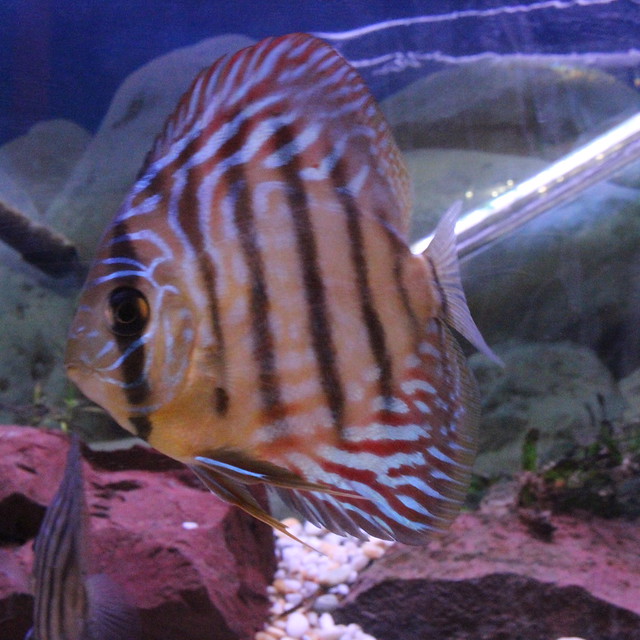Lizards are one of an interesting group of animals that you might not think about too much - the reptiles. The biggest of the reptiles, the alligator, is hard to miss, but they live only in the southeastern United States. Smaller reptiles, like lizards and snakes, can be found in your neighborhood. If you want to go exploring to see these colorful and fascinating animals, here are some of the more common ones that you might find.
 |
| Collage of four U.S. state reptiles showing a turtle (box turtle), snake (garter snake), lizard (collared lizard), and crododilian (American alligator) (Photo credit: Wikipedia) |
Let's begin with lizards. Most common lizards are between four and twelve inches long, which is about the length of one or two of your hands. If they see you looking for them, they will probably scurry away quickly, so approach them quietly. Some lizards can go as fast as fifteen miles per hour, about as fast as you ride your bicycle, and very fast for a reptile! One really interesting thing about lizards is that if another animal grabs their tail, the tail breaks off, and later the lizard grows a new one! All lizards have smooth dry skin, so do not worry about them being slimy. One of the more common lizards all across the U.S. is the skink, which has a nice round body, short stubby legs, and is very shiny. Look for skinks during the warm part of the day in areas that no one goes near, like groups of rocks in a vacant lot. Many skinks have long stripes along their bodies, and a solid color pink or blue tail!
Another wonderful group of reptiles is the snake family. When you see a snake, think about how it uses its muscles to move so differently than any other animal. Snakes can move very fast, so don't be surprised if it slithers off quickly as soon as it realizes you are there. Be very quiet! Two of the snakes that are found throughout nearly all of the United States are the garter snake and the hognosed snake. Garter snakes are very thin snakes, about the size of two or three pencils, and about as long as your arm. They have long stripes on their bodies, the stripes are yellow and dark green in the eastern US, red-orange in the western US. Look for them in grassy fields or in grasses near the edge of woods, especially in sunny spots where they can get warm.
Hognose snakes have funny turned up noses that they can use for digging, and that is how they get their name. They are big brownish or greyish snakes with darker colored blotches on their bodies. They like open sandy areas, and areas with a lot of fallen leaves on it. Hognose snakes have unusual behaviors when they feel threatened. If you get too close to a hognose, it may try to scare you by hissing at you and puffing out its head. If it feels really scared, it can flop over and play dead.
Go exploring to see what reptiles you can find in your area. Look on the Internet or in a book to see a few pictures of snakes and lizards in your area, so that you will know what to look for. Enjoy!









